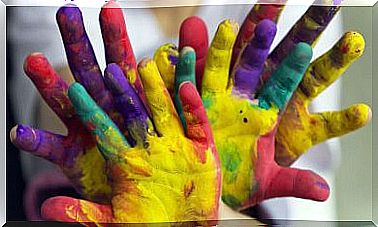Emotions In The Classroom – Being Parents

Much has been said and written, and will be said and written, about the need to work on emotions in the classroom. This is because it is fundamental, at all ages and at all levels of education, that emotions and feelings be part of the content of the school curriculum, the objective being that students develop strong emotional intelligence.
What do we know about emotions and feelings?
Emotions are responses or psycho-physiological reactions that the body generates when it is confronted with situations, people or objects in our environment.
Thus, an emotion represents a mode of adaptation that a person has, which organizes, at the physiological level, the different responses of the different biological systems (facial expressions, muscles, endocrine system, etc.).
In turn, feelings refer to both a state of mind and a conceptualized emotion. In other words, feelings are the result of emotions, since they are more durable over time and can be verbalized.
Thus, the difference between emotion and feeling concerns intensity and duration; an emotion is shorter and more intense.
So, sadness, joy, anger, fear or longing are reactions and therefore emotions that a person can feel. They are almost automatic responses to a change, to a situation, to a person or to an object. And, in turn, if these emotions persist over time, they can become feelings.

Why work on emotions in the classroom?
Working on emotions in the classroom is fundamental for the proper development and personality shaping of children and adolescents. Children and young people need to learn to recognize their own emotions and those of others, to learn to talk about them and to deal with them at all times.
Anxiety, stress, depression and frustration can be controlled if children from an early age learn to manage their emotions.
Improving self-esteem, relationships with others, and achieving personal goals are closely related to managing emotions. That is, with the ability of a person to regulate his emotions and self-regulate if necessary.
Thus, the achievement of the goals of an emotional education are the reasons why emotions should be worked on in the classroom. And these goals are for children and young people to be able to:
- Know, recognize, understand and describe their own emotions and those of others.
- Learn strategies and develop skills to control negative emotions and generate positive emotions
- Avoid and prevent the negative or harmful consequences of negative emotions.
- Develop positive and optimistic attitudes towards life.
- Become aware of the benefits and well-being of positive emotions.
How to work on emotions in class?
Educators must be able to plan educational activities to work on emotions in the classroom, the objective of which is to generate strategies for managing the emotions of children and adolescents.
Thus, in order to achieve a gradual development of emotional intelligence in students, it is essential to work on empathy, the development of proactive attitudes and assertiveness.
In addition, it is important that emotions can be worked on in class as content in themselves, but also as transversal content. By their very nature, emotions represent processes that adapt to different environments and activities.
Consequently, they will always be present in every teaching-learning moment of any school subject.

Activities for working on emotions in class and at home
Finally, we present some options for educators and parents to work on emotions with their students and children:
- The school assembly. Given its peculiarity, sharing and dialogue, the school assembly is a good time for educators to work on emotions with children. For example, by asking them what they did at home the night before. Talking to children about how they felt, what they are feeling and why, is the first step in getting them to start knowing their emotions.
- Reading. Storytelling or reading stories and tales is an ideal strategy for working with emotions, since, through the experiences of the characters, what they feel and experience, it is possible to recognize and identify the different emotions. .
- Problematic situations. It is an activity more suitable for adolescents. The idea is, from a problematic situation, to discuss the emotions that are involved, to understand why and to analyze the options and strategies to modify, accept or manage the emotions. In situations such as a quarrel with parents, the loss of a loved one, or the inability to achieve a personal goal, for example.
- The drawing. Drawing emotions is a good strategy for children to express, define and externalize their emotions. Colors and painting are a great educational strategy for immersing ourselves in and talking about how we feel, and for learning more about the emotions we paint.









